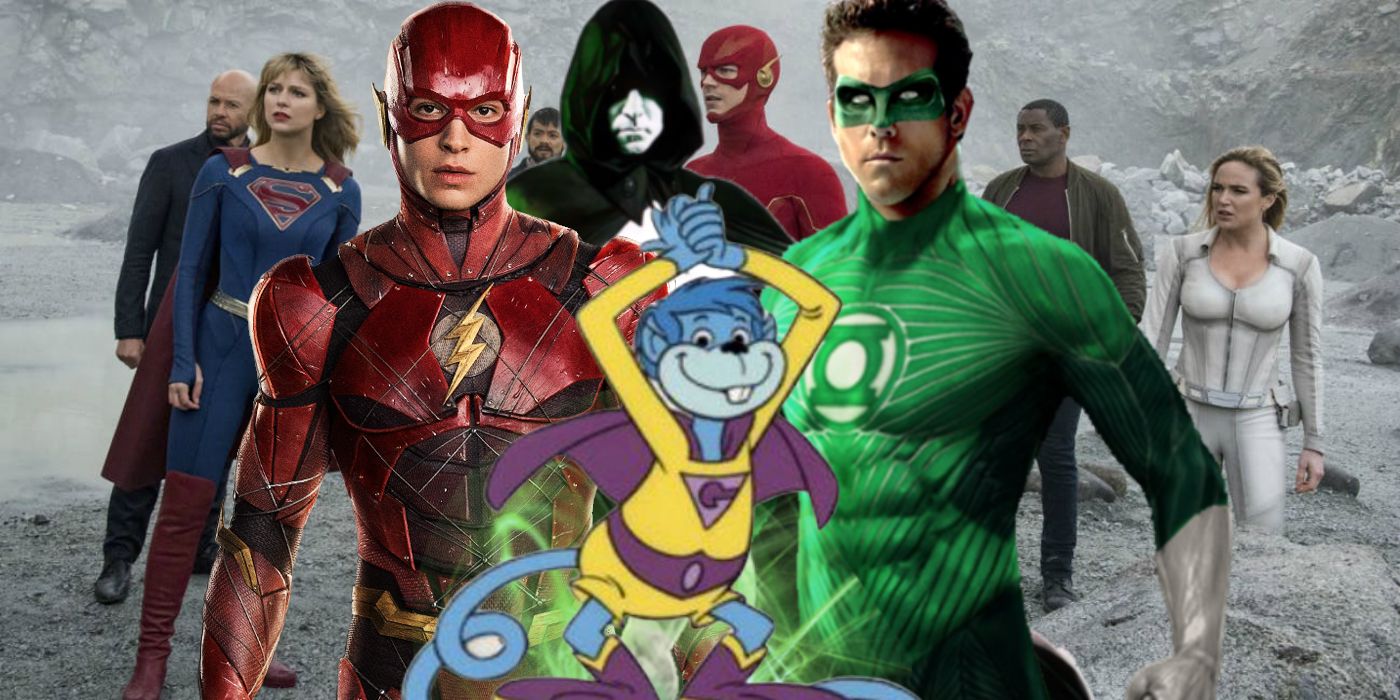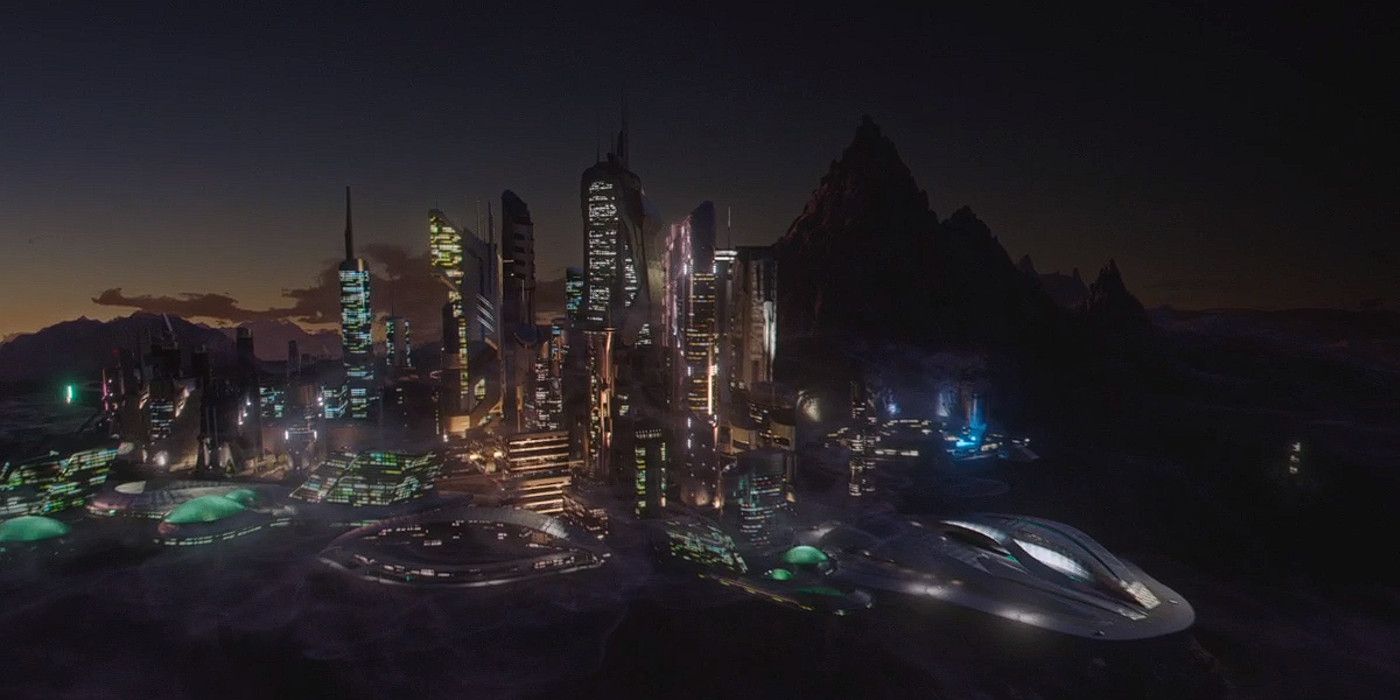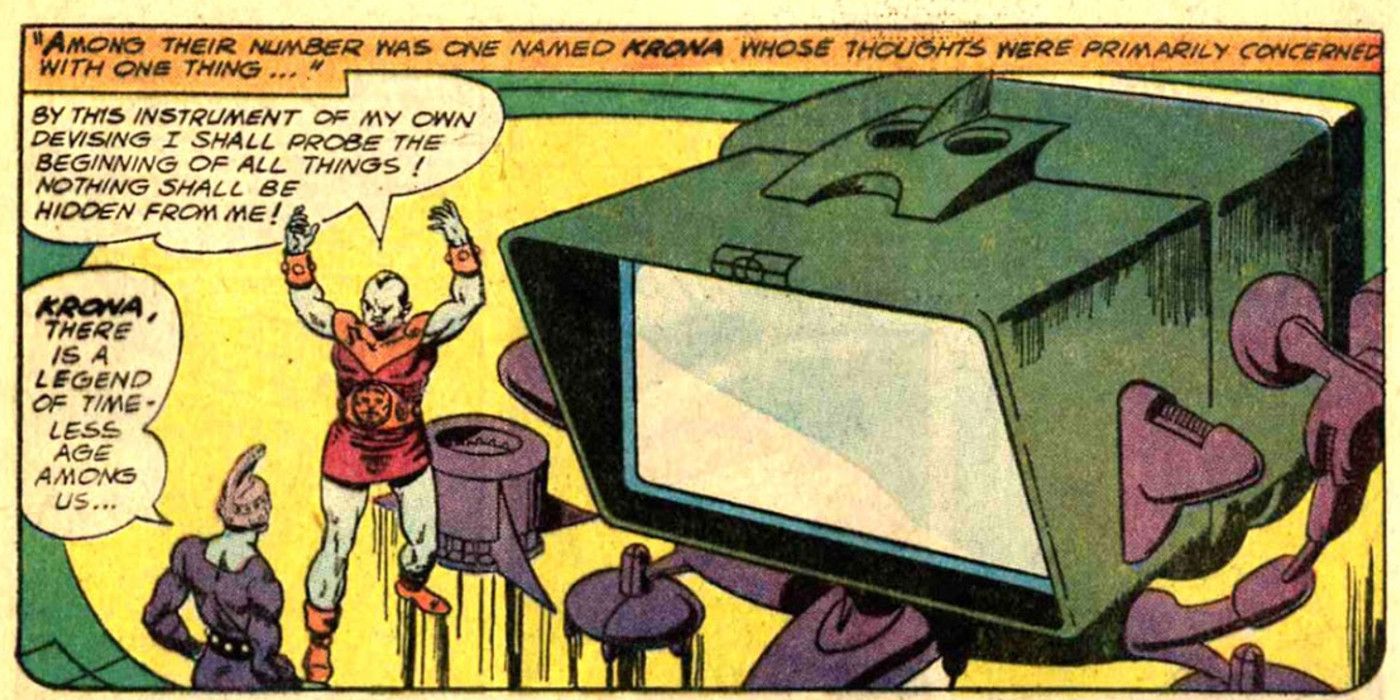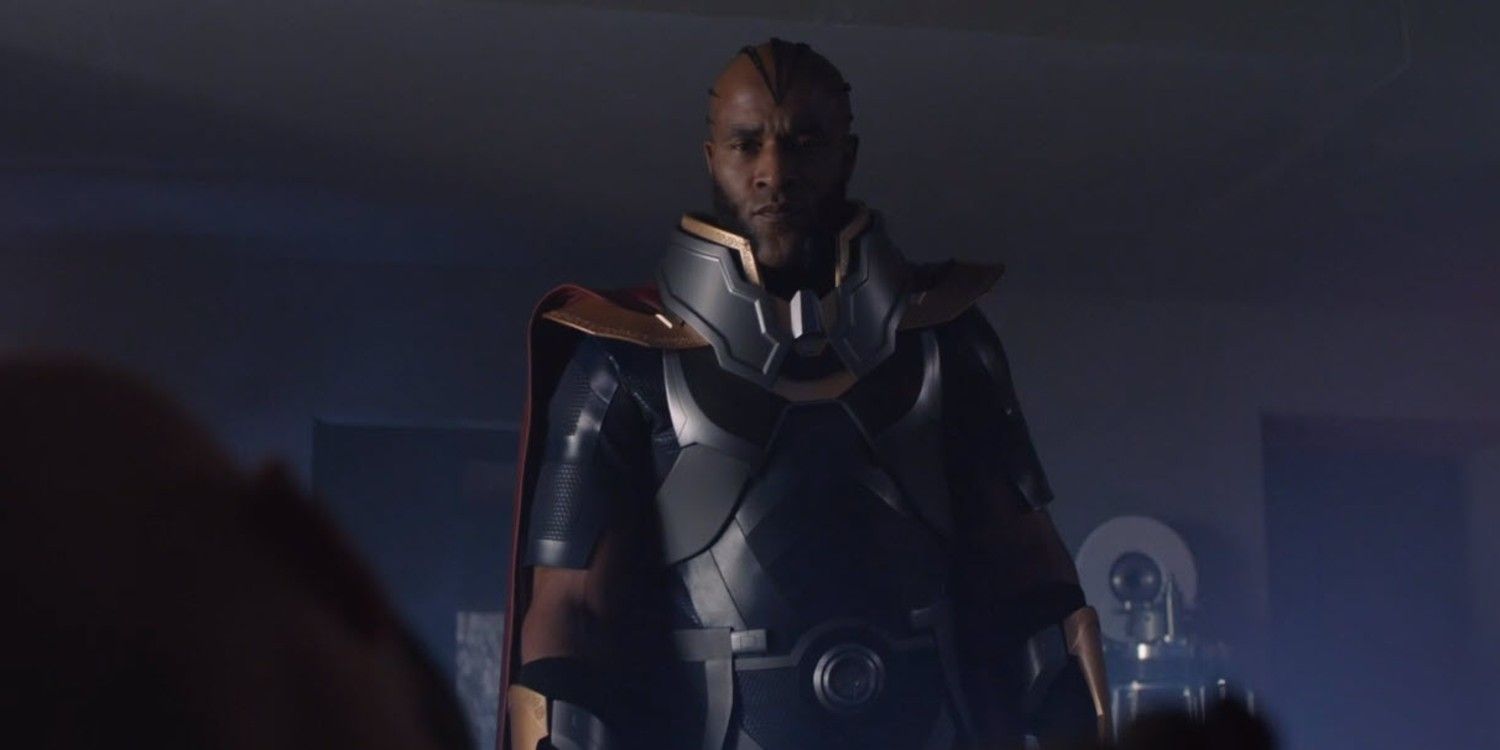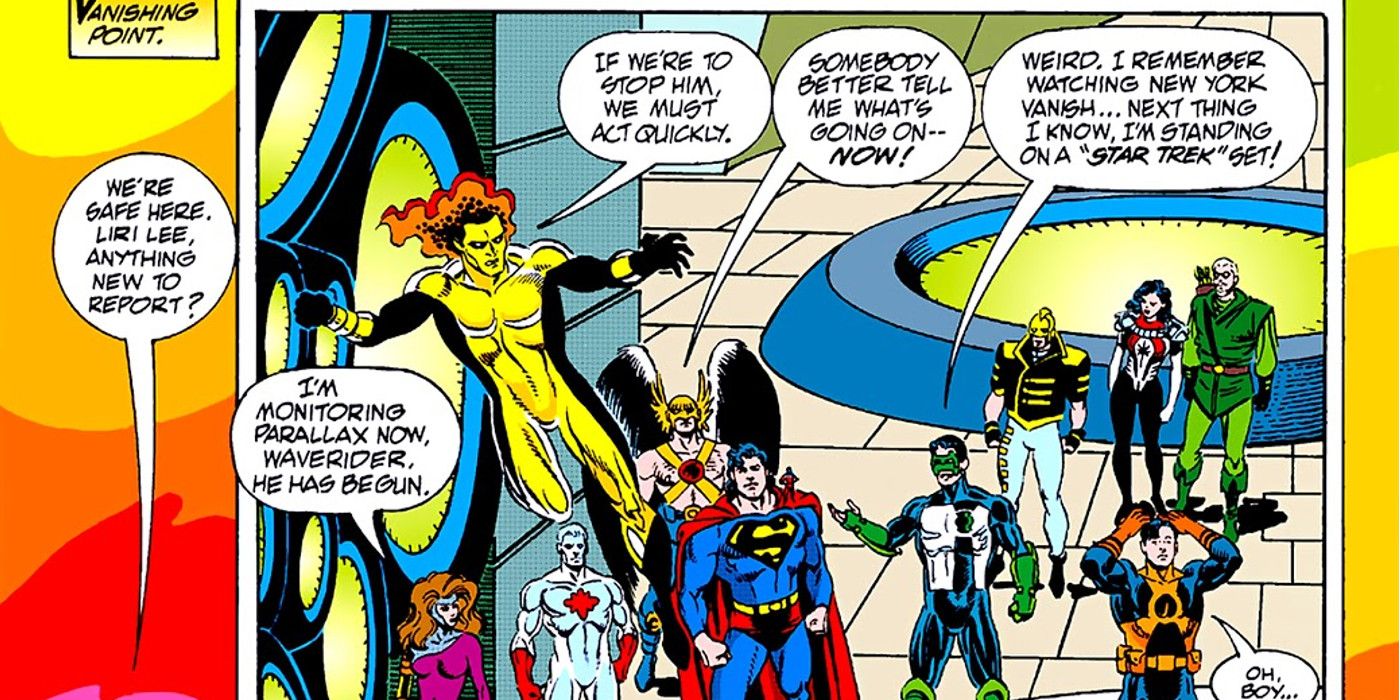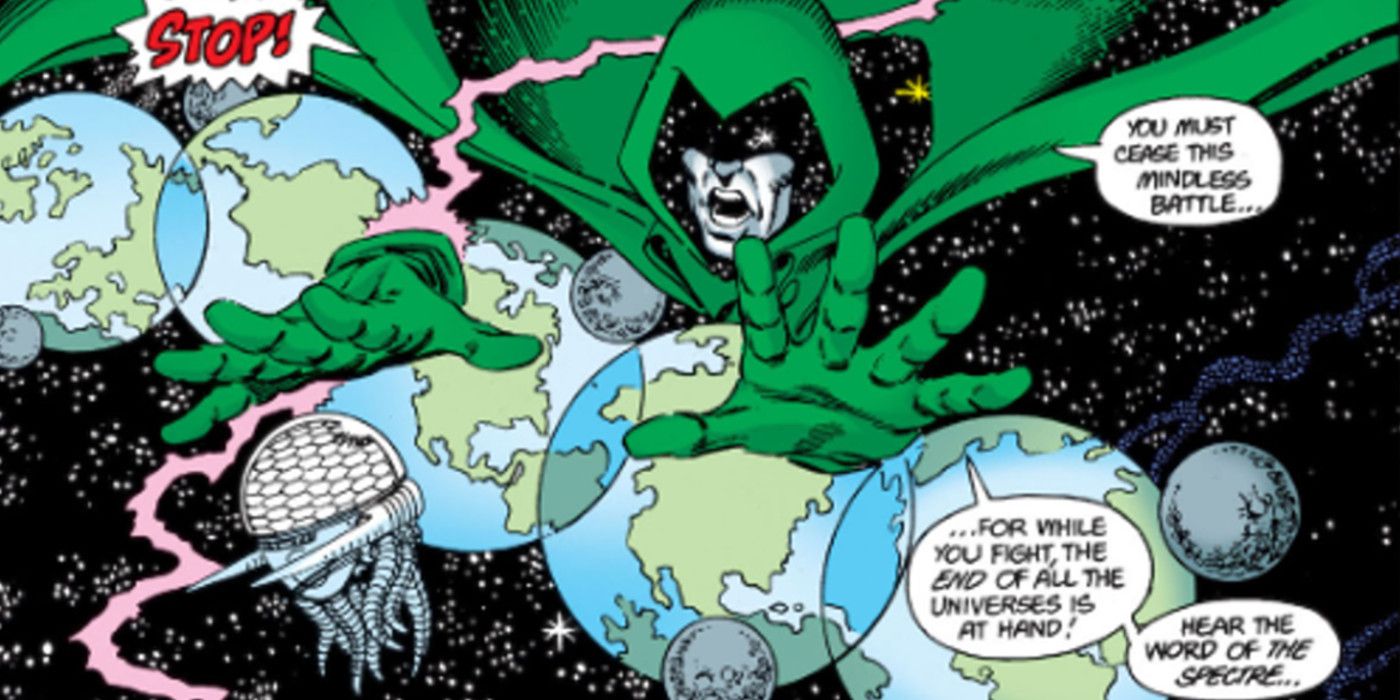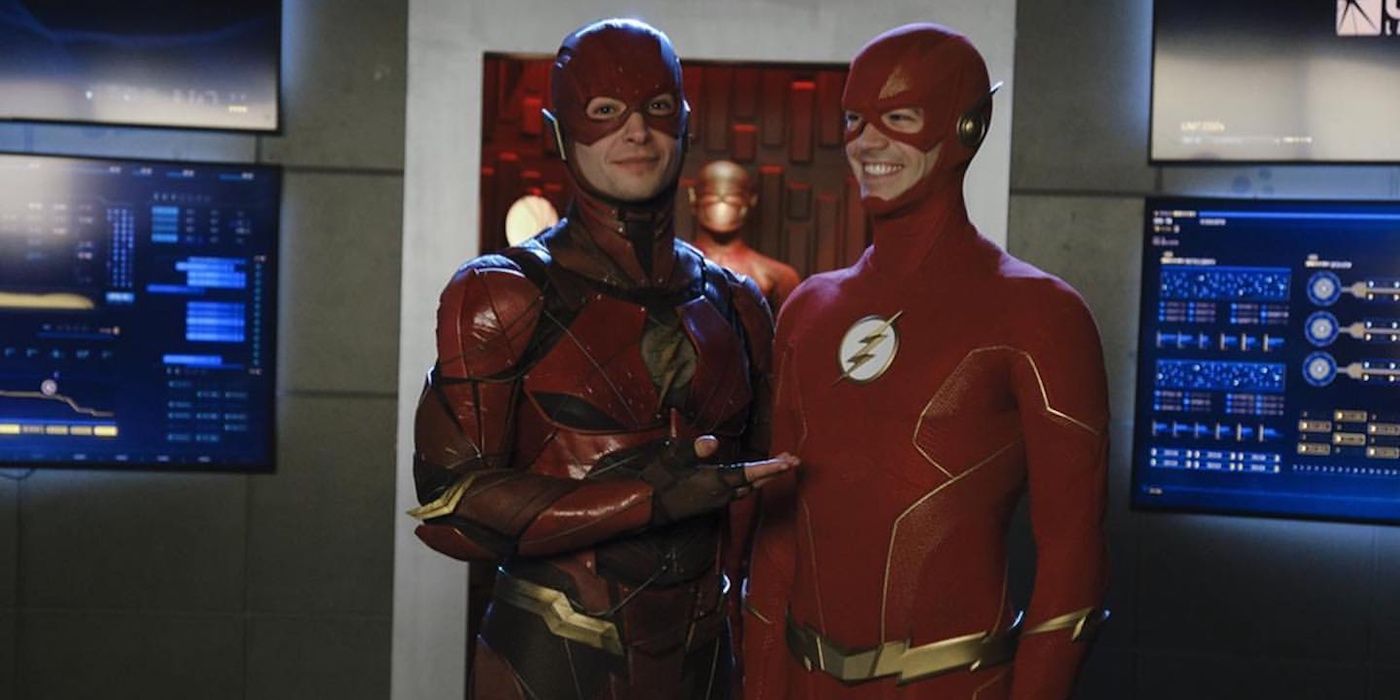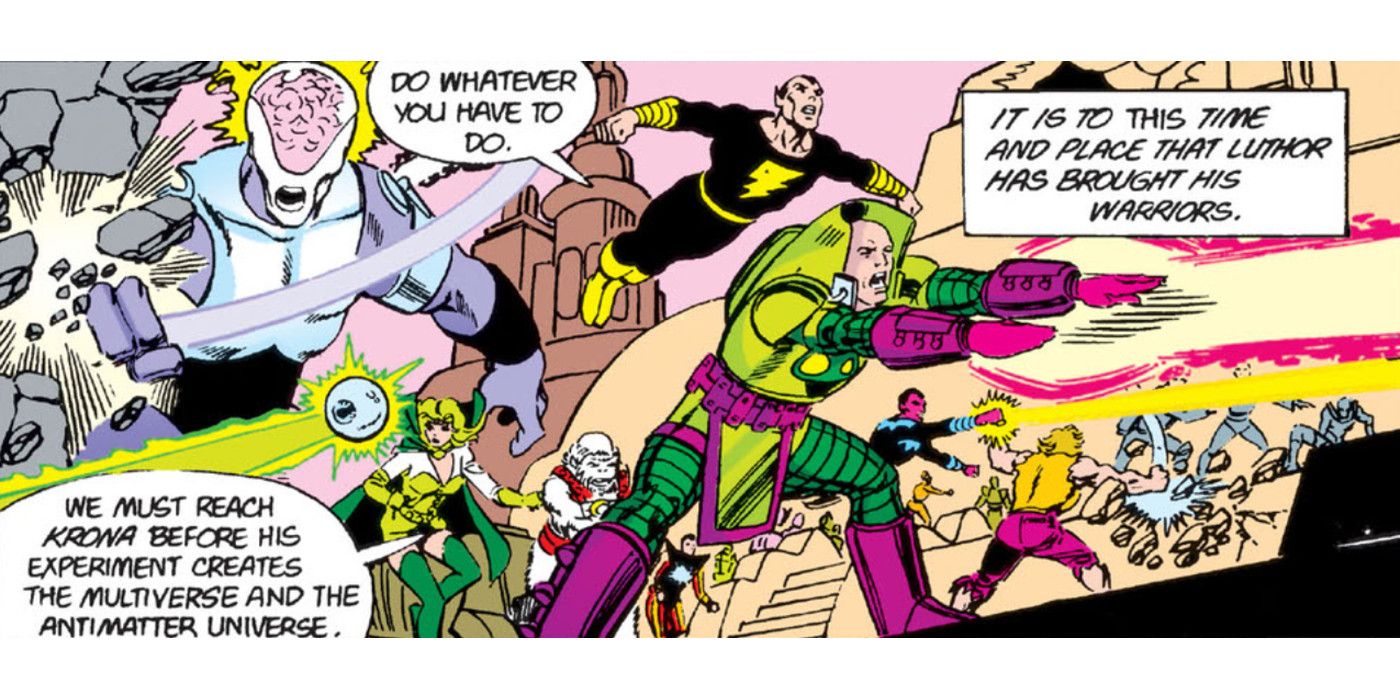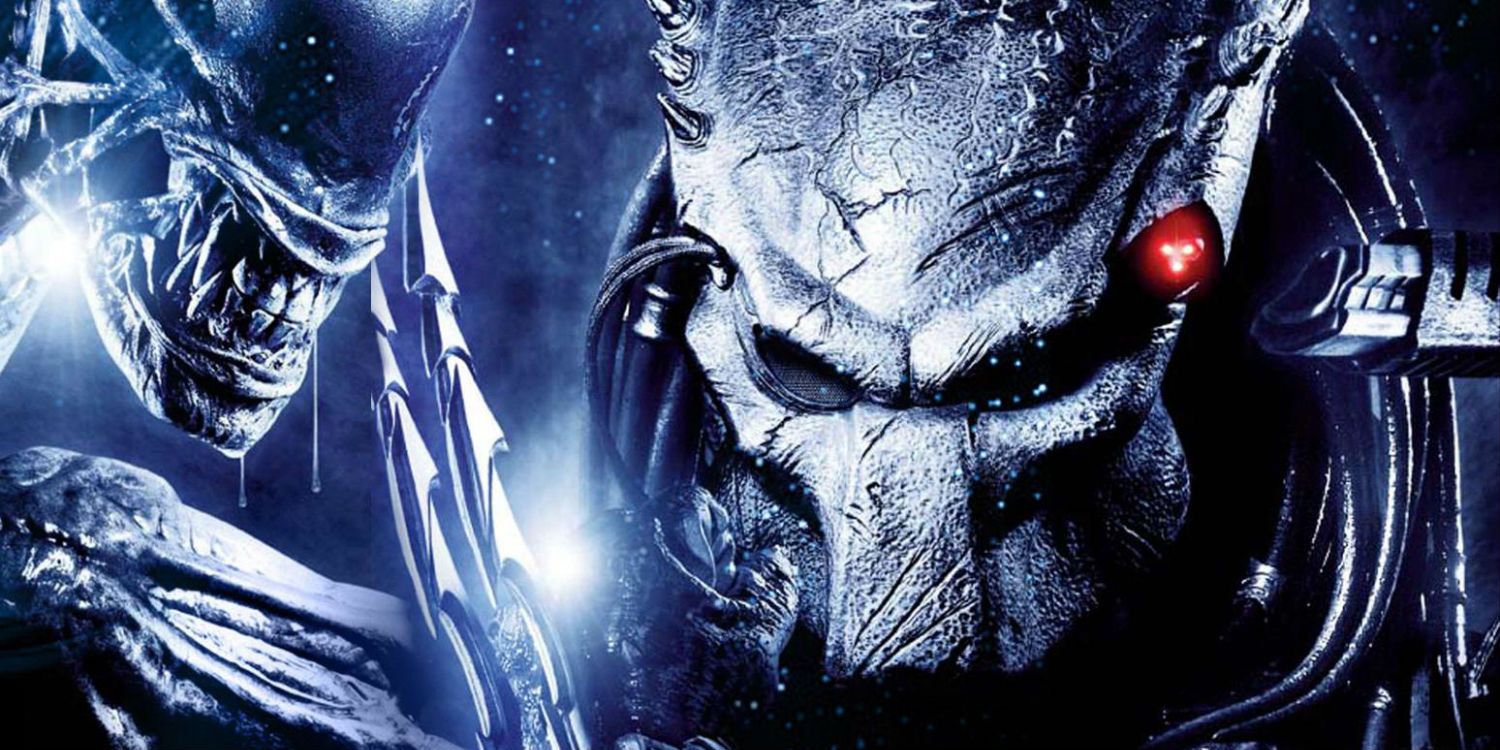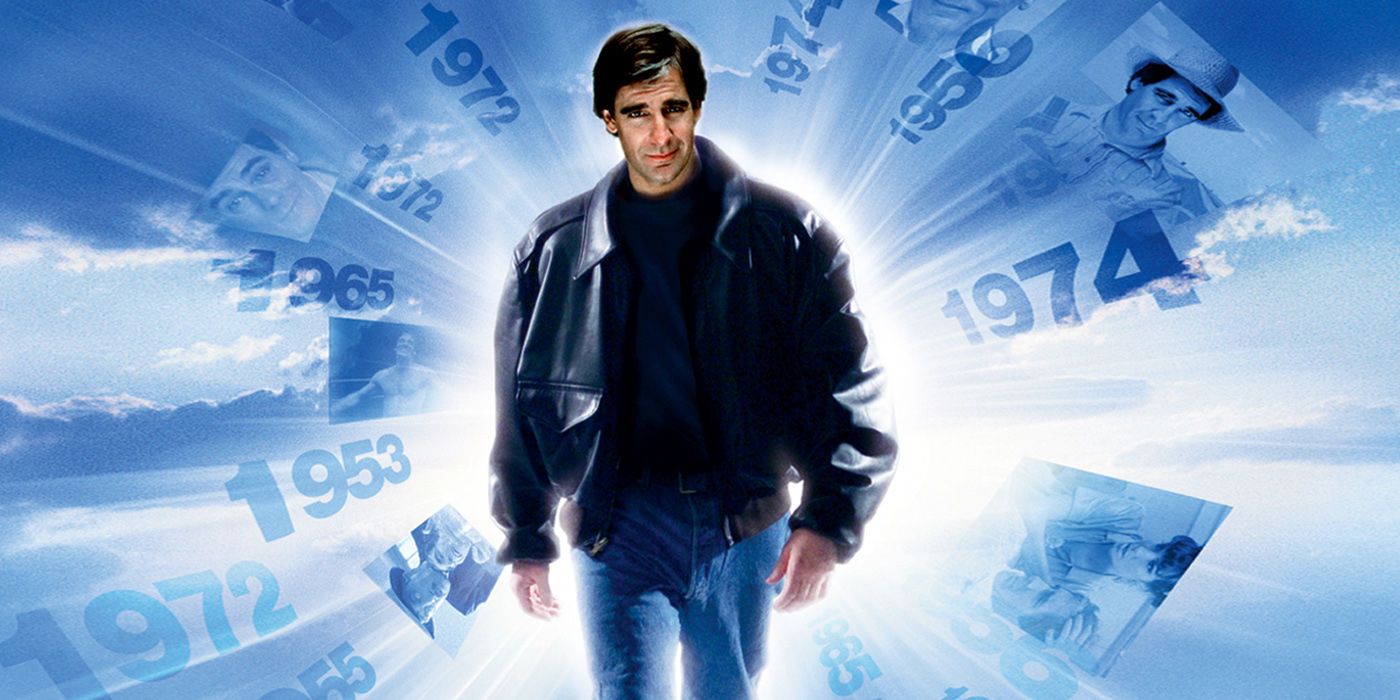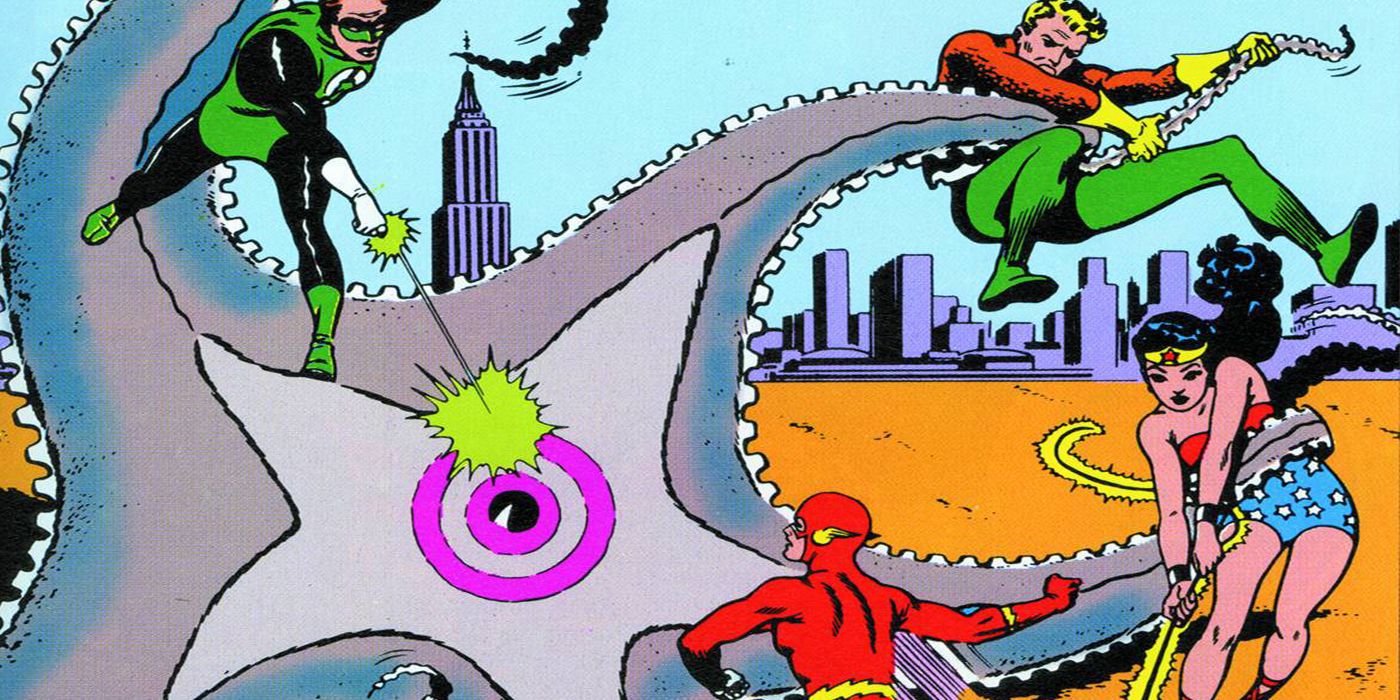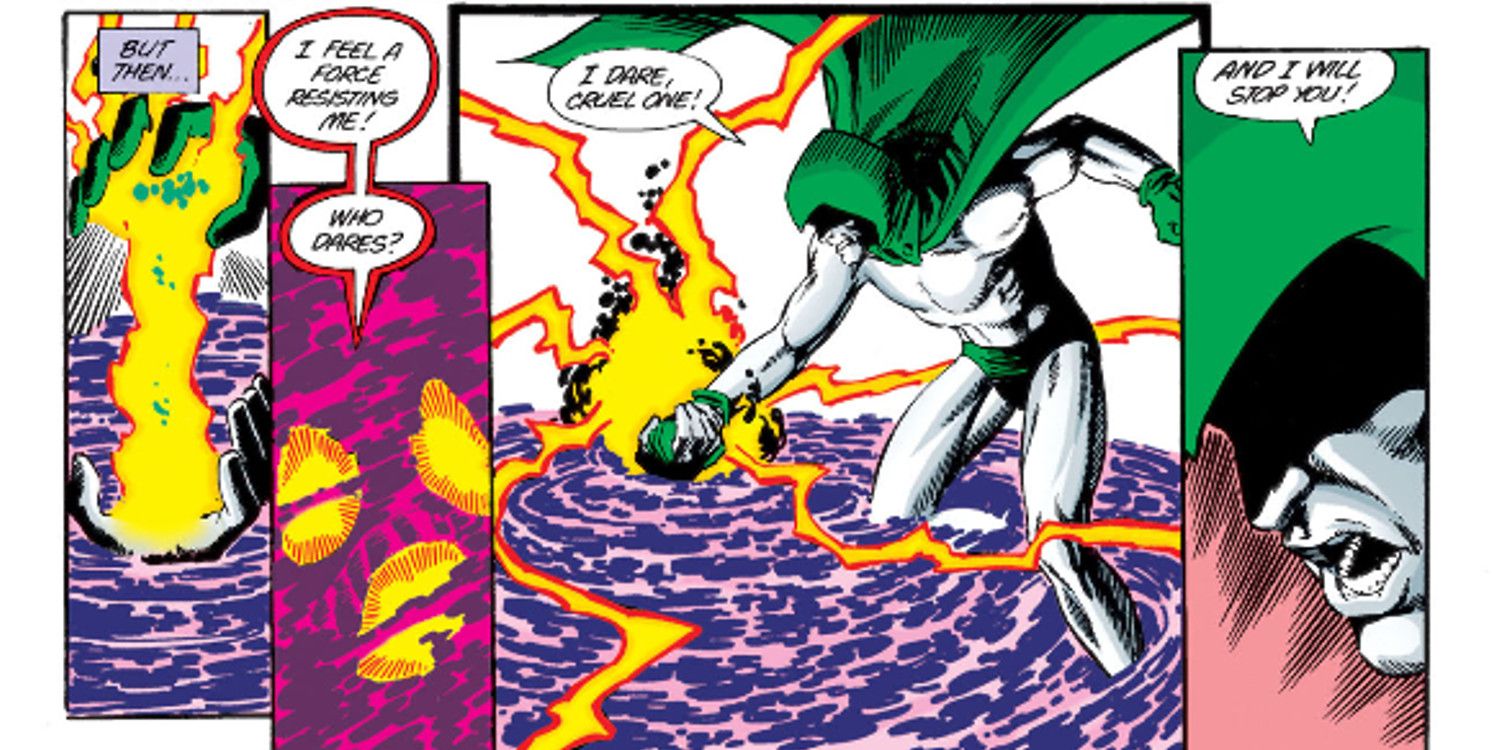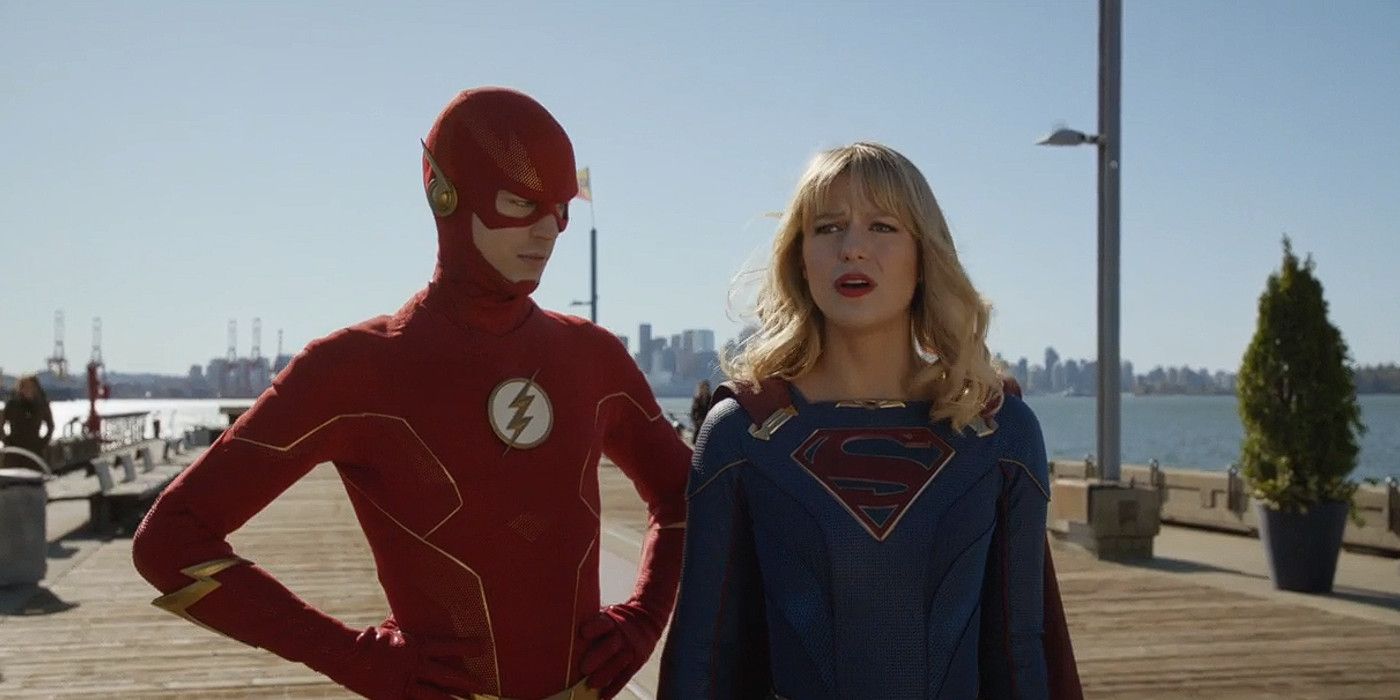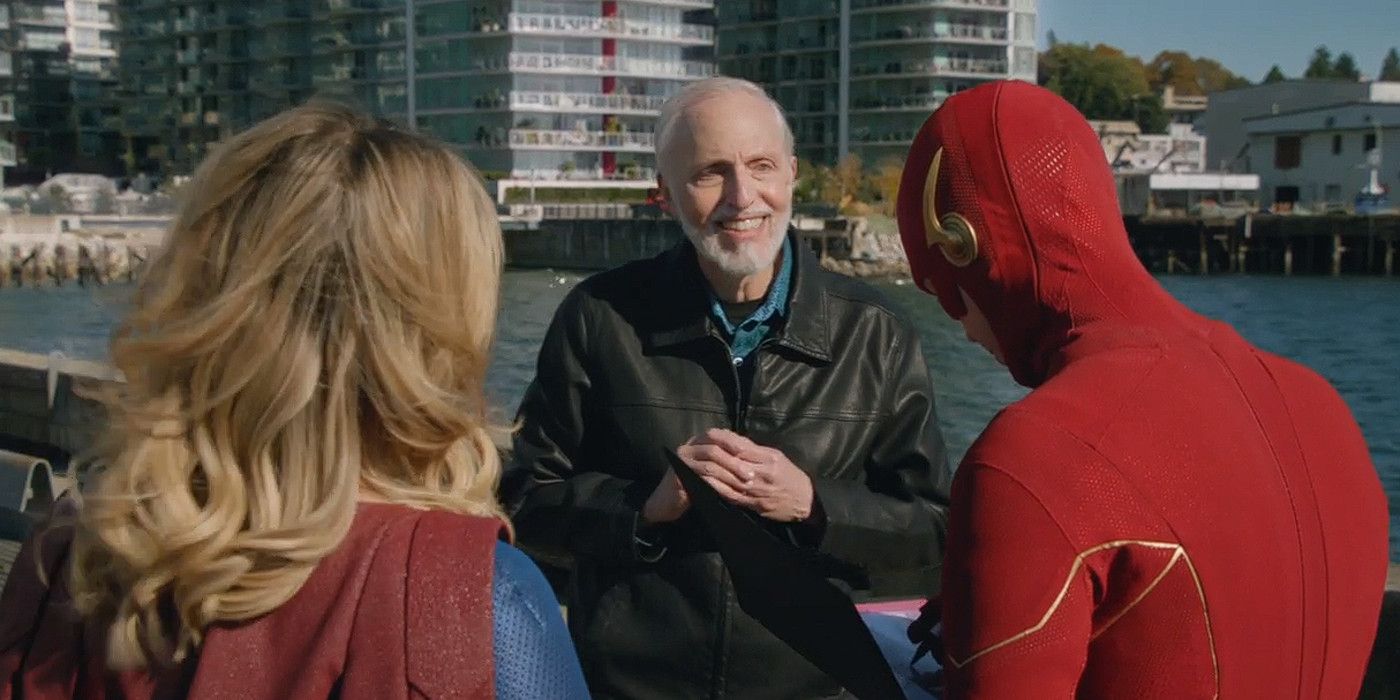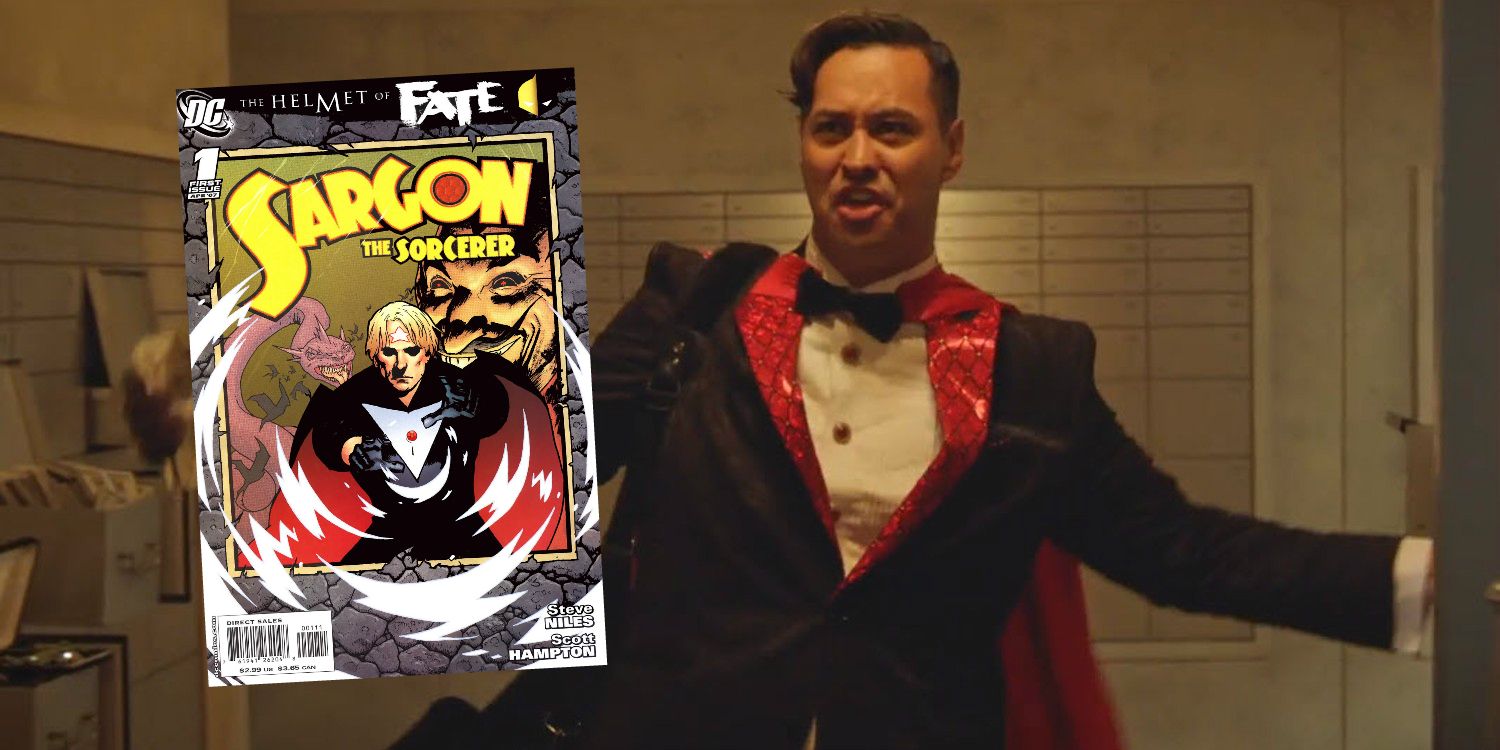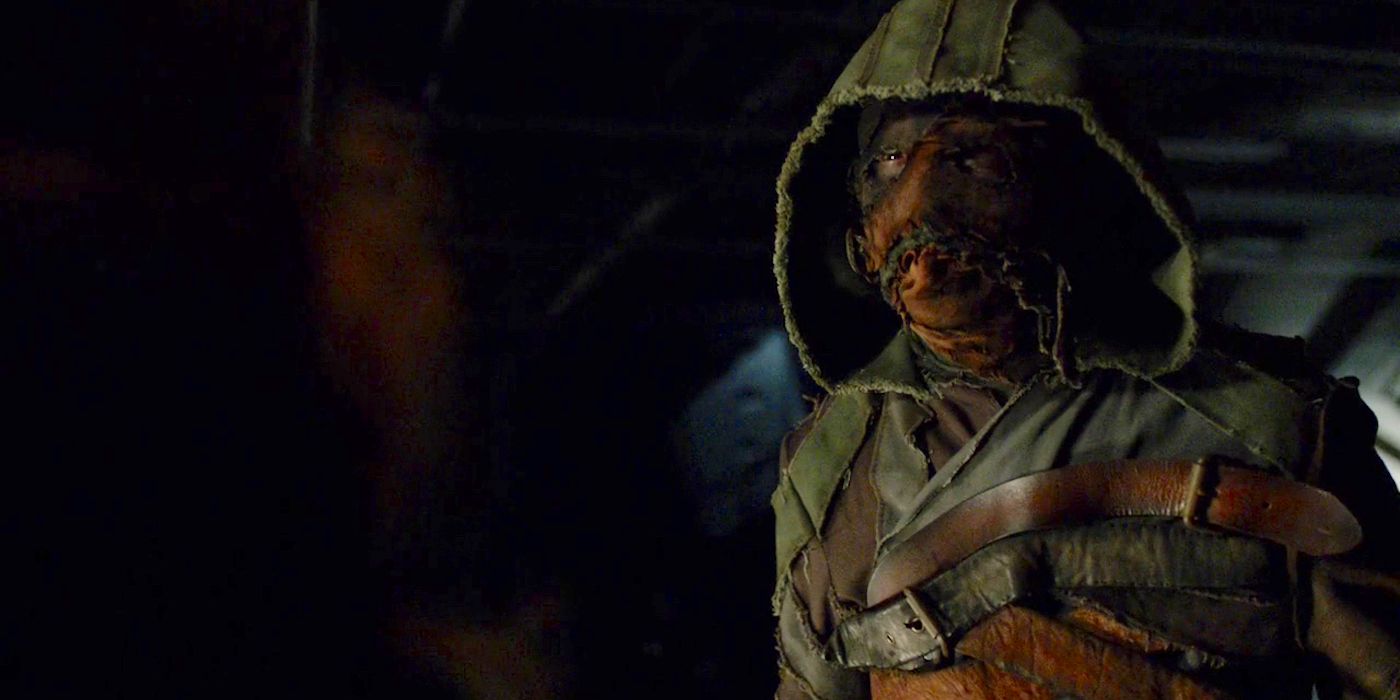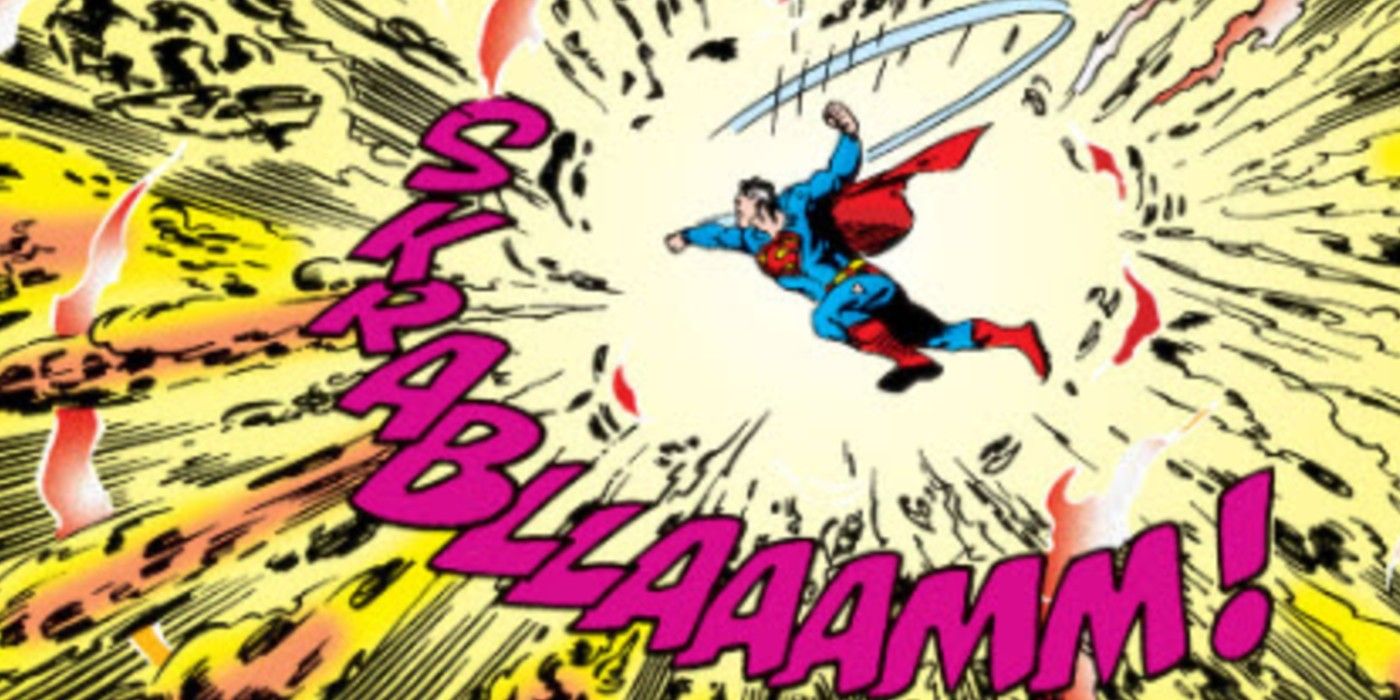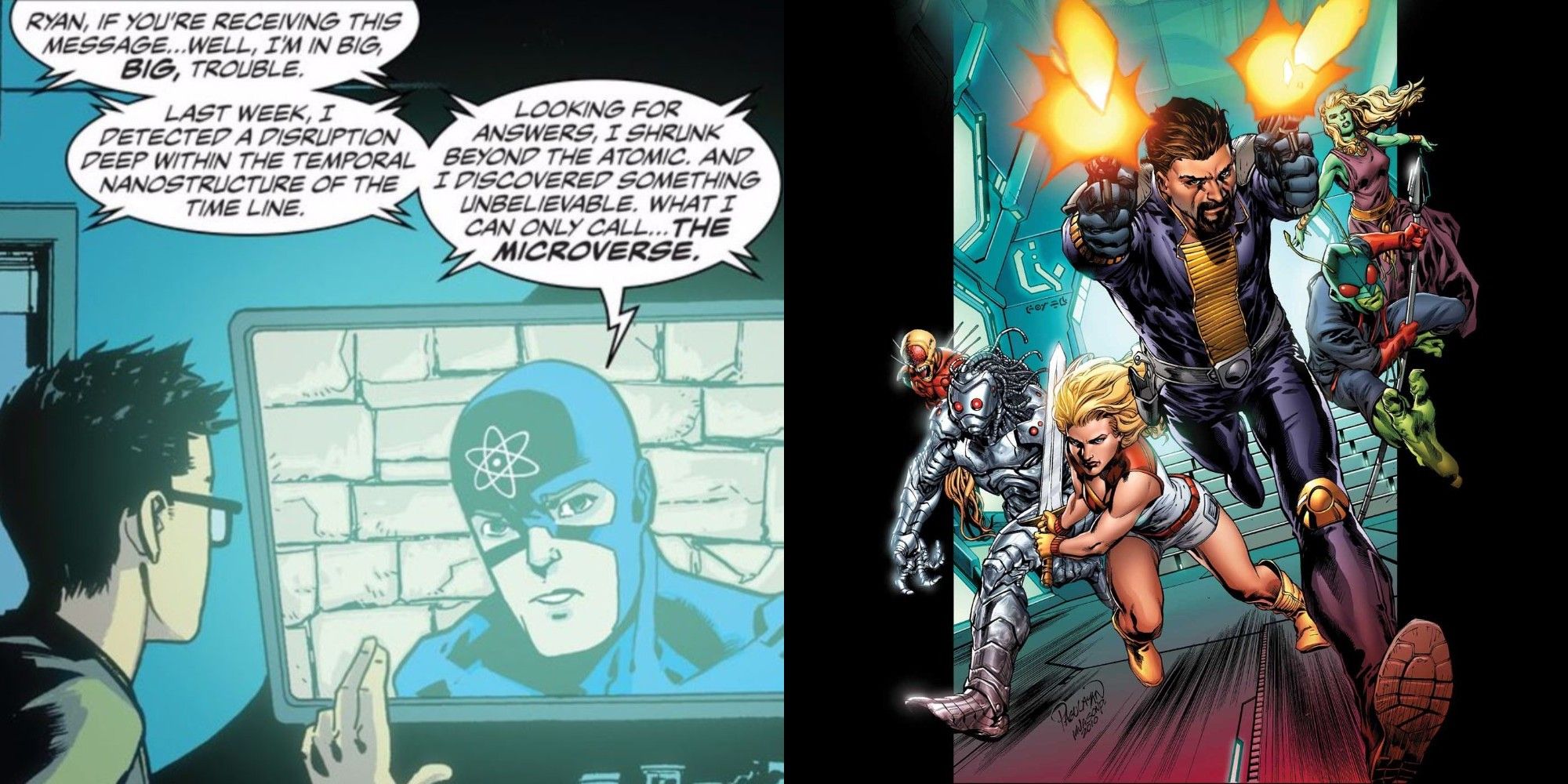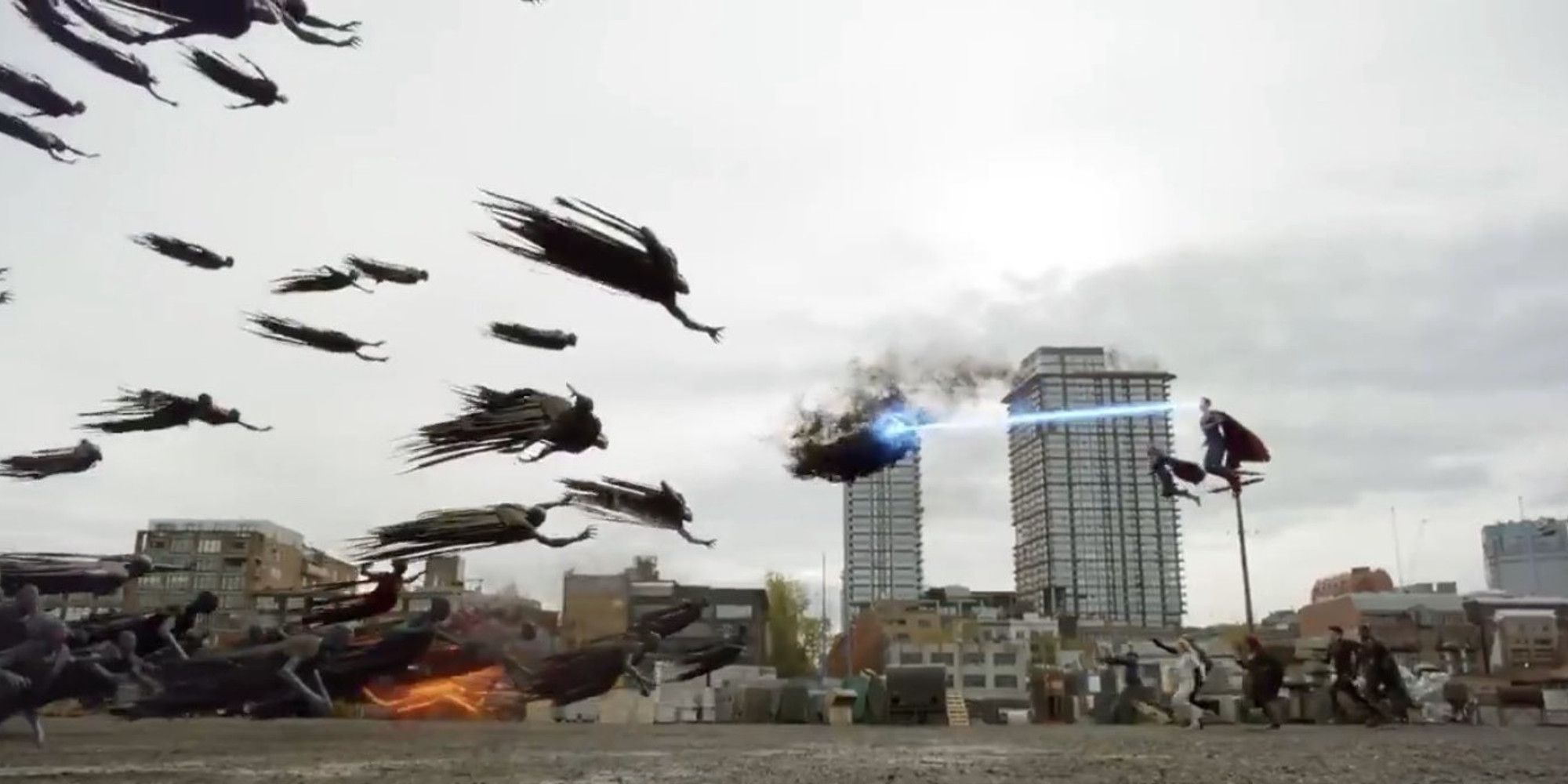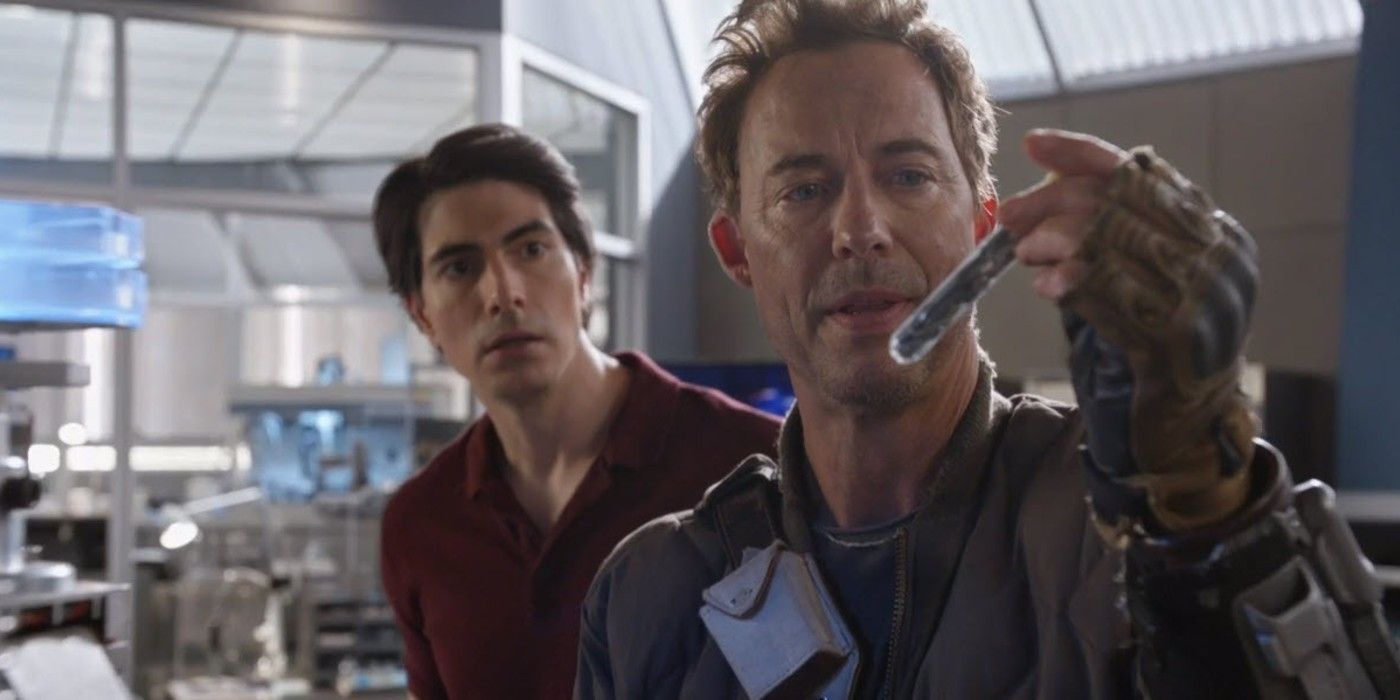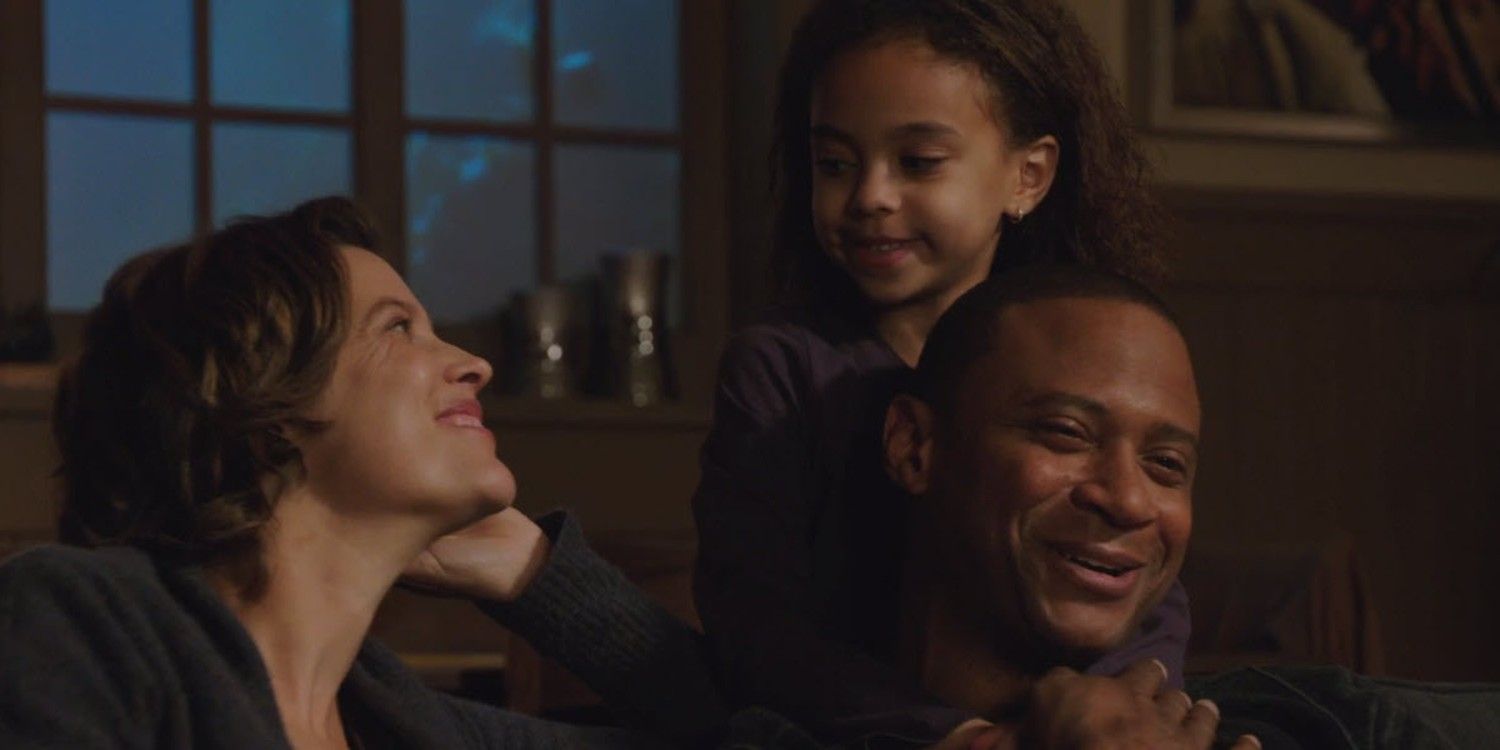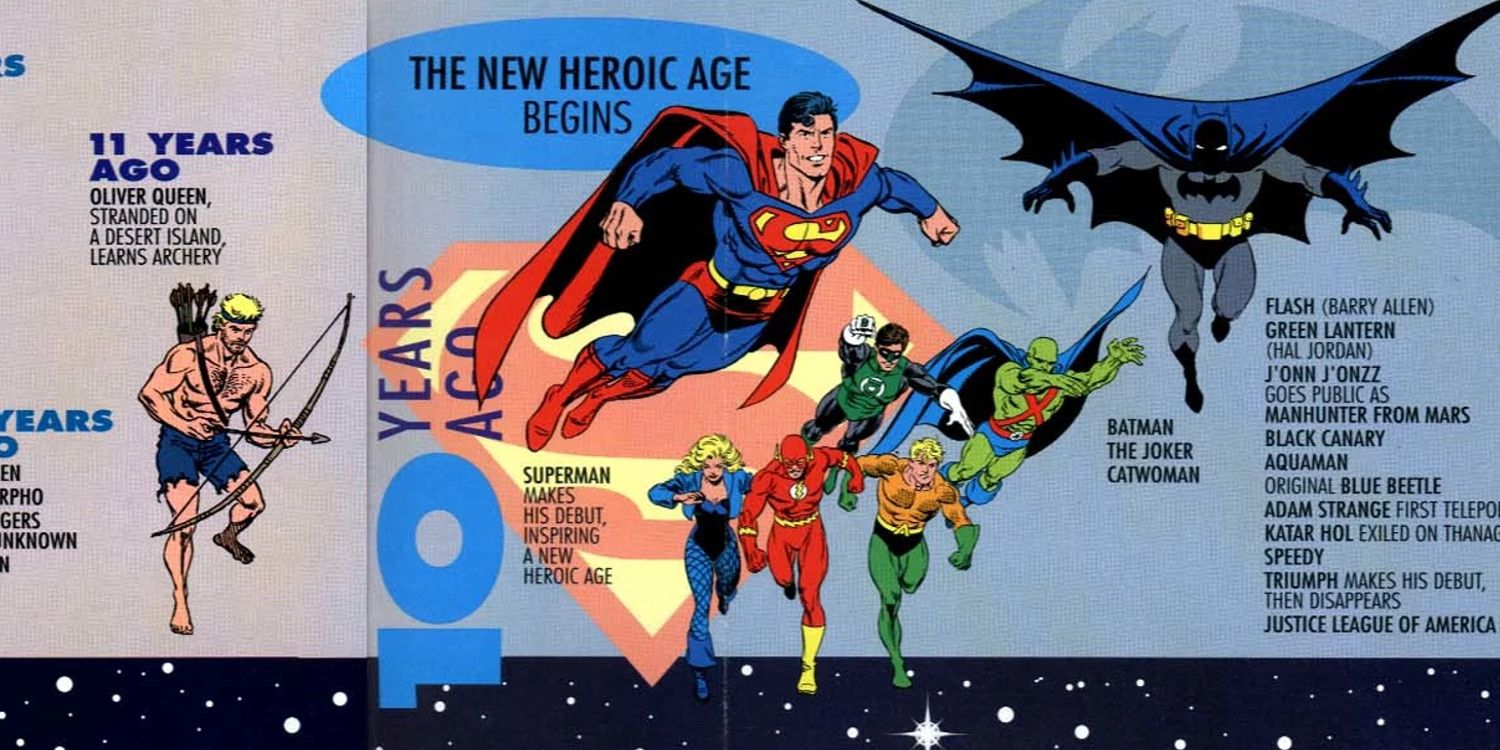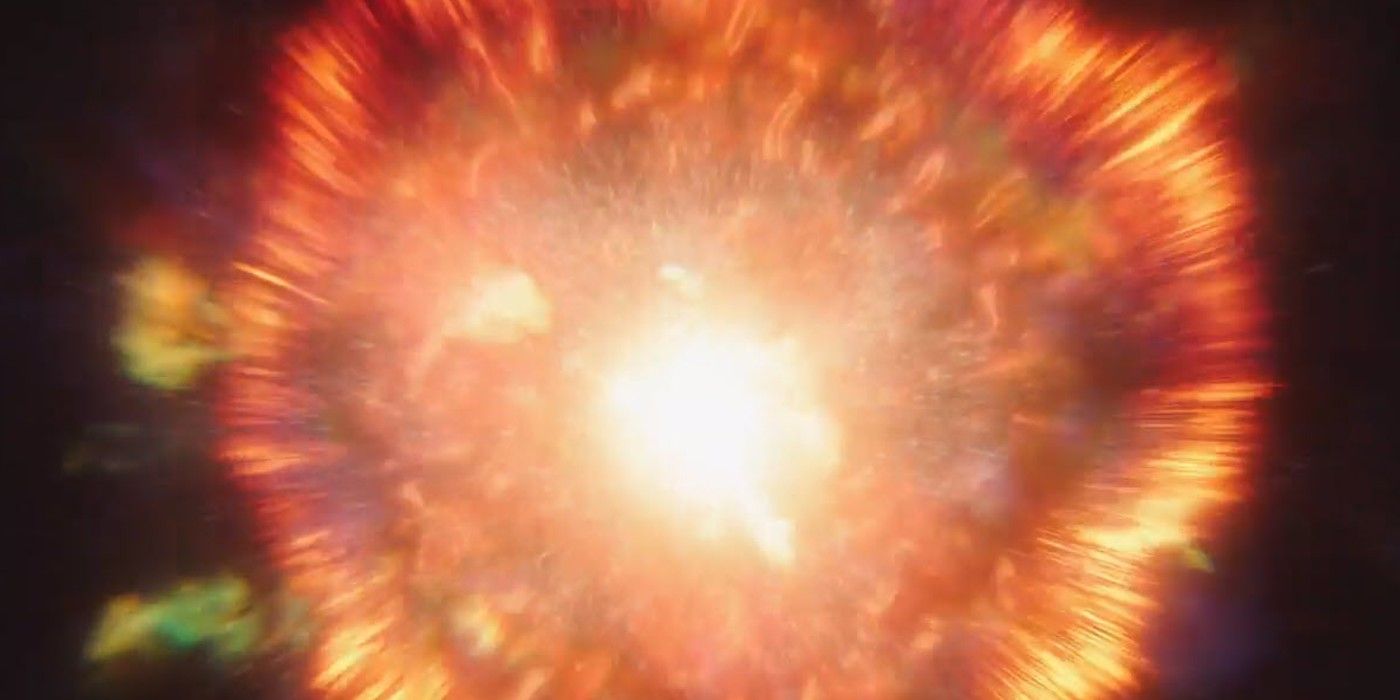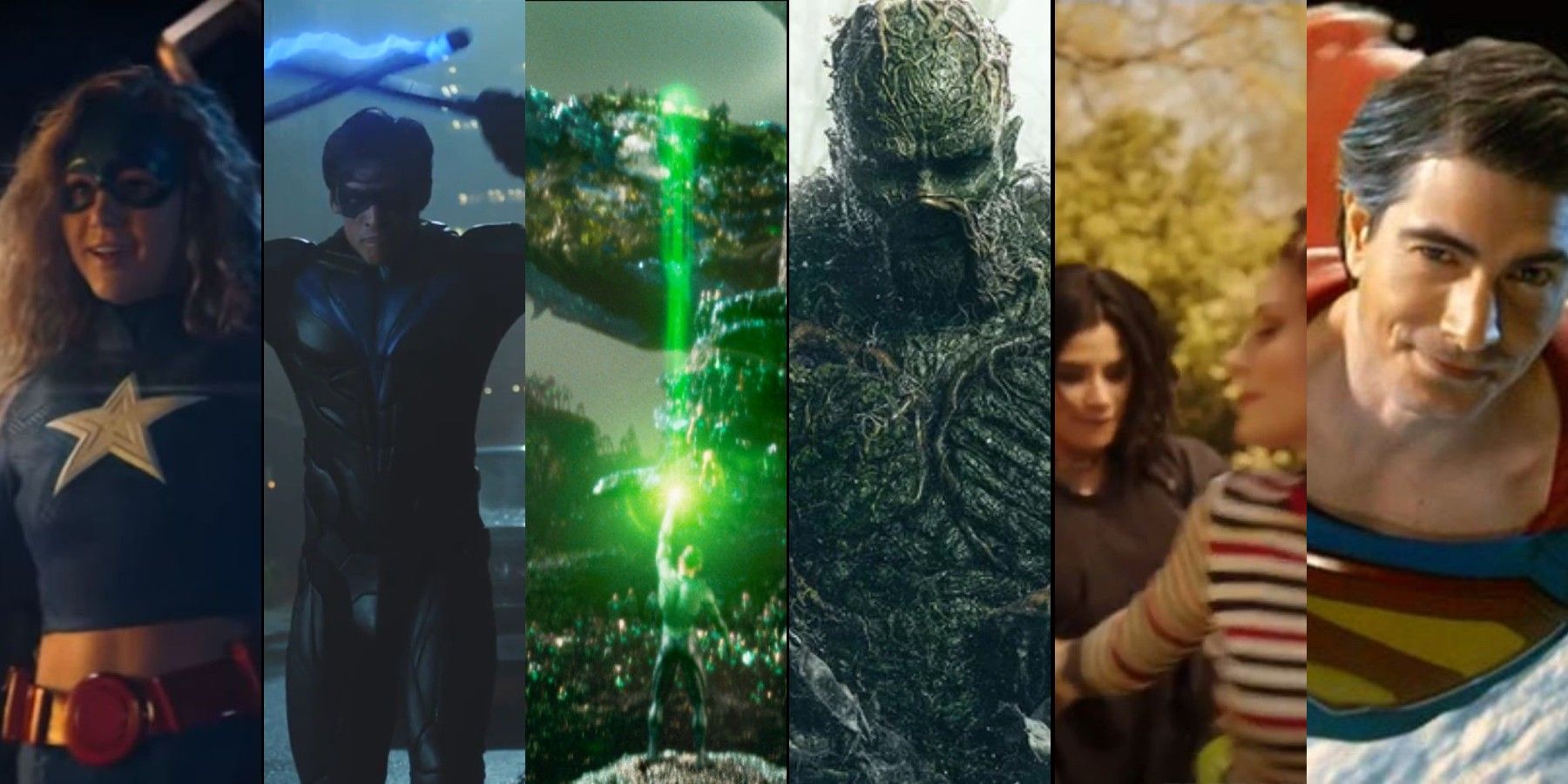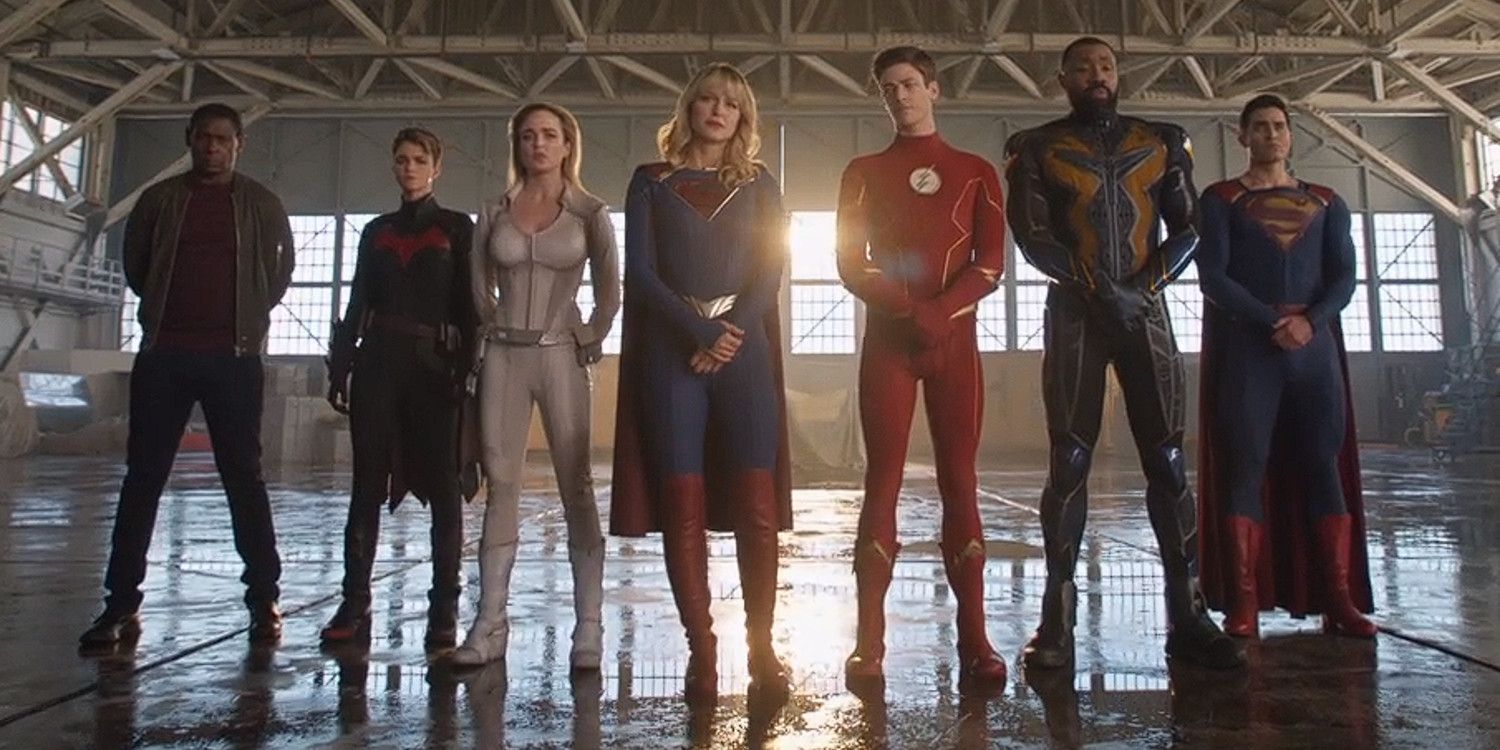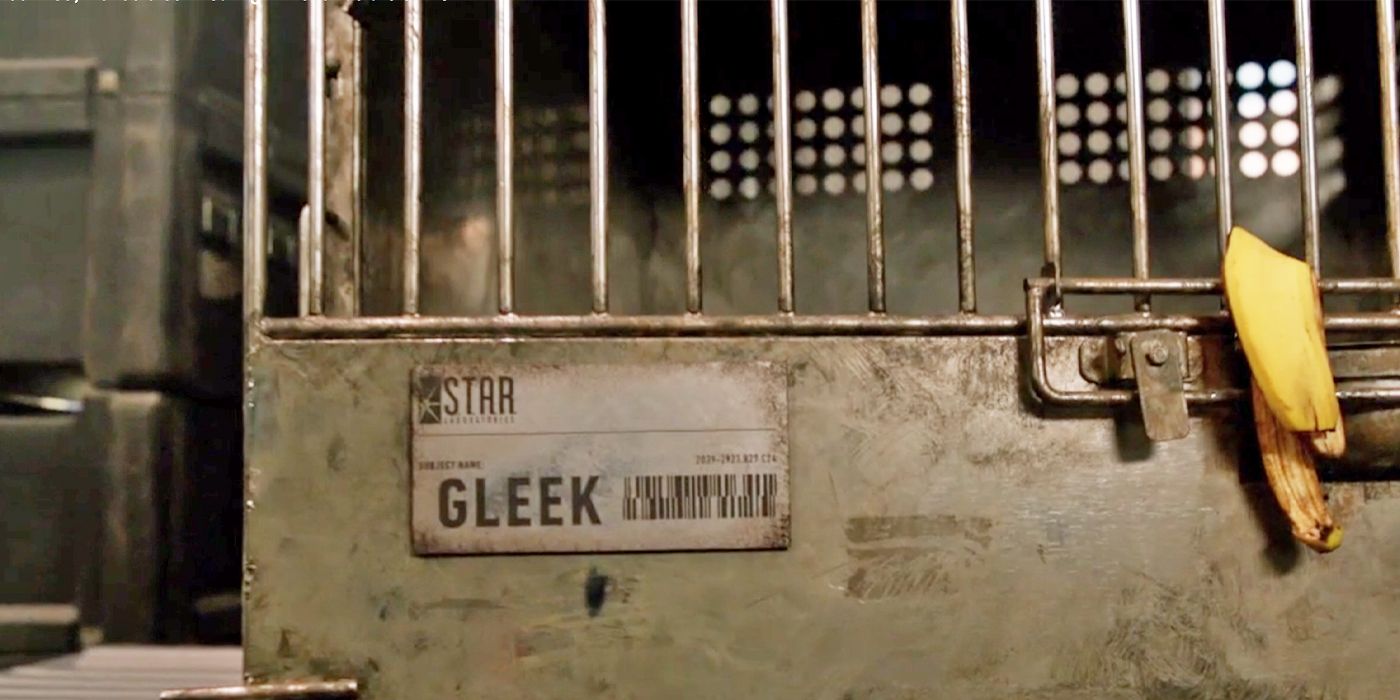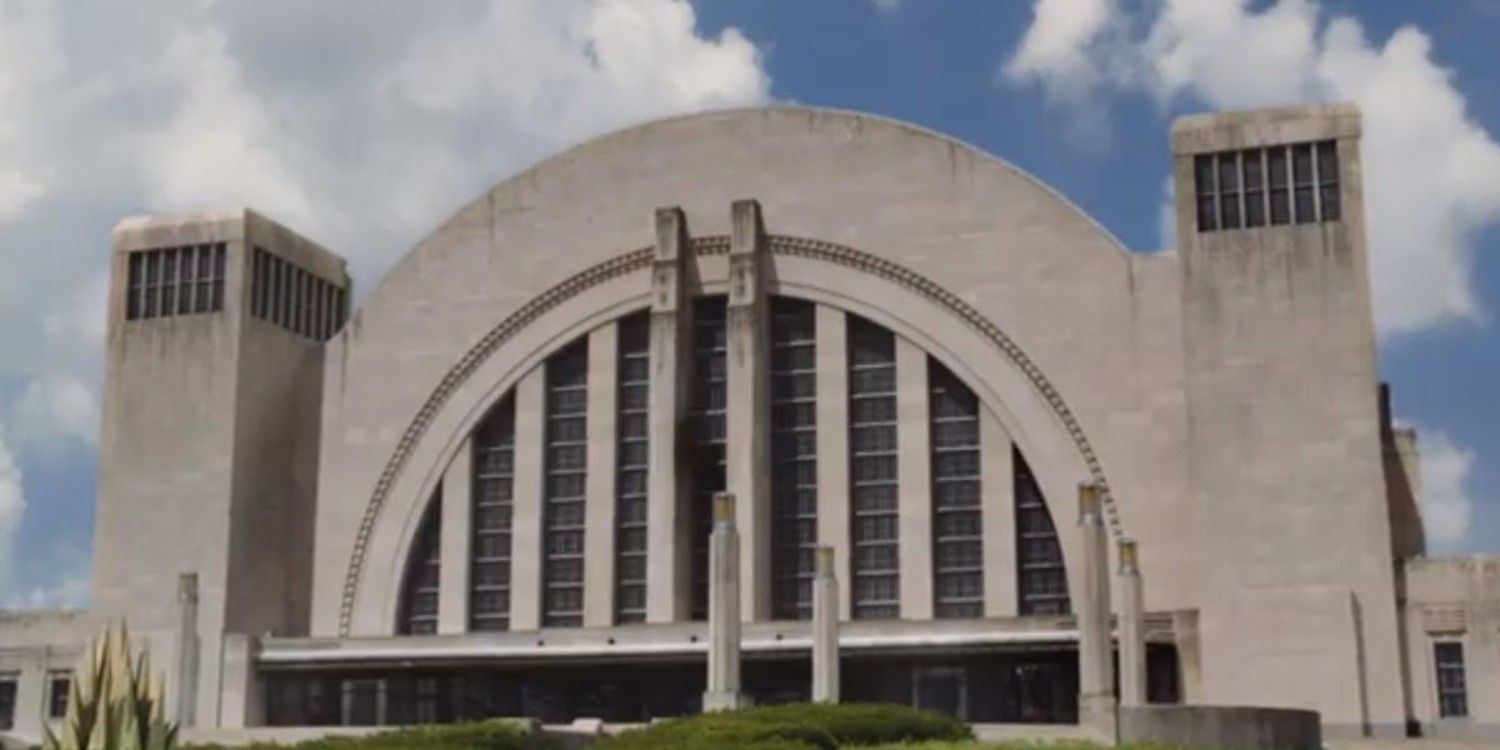Warning: The following feature contains SPOILERS for Crisis on Infinite Earths.
The final two chapters of the Arrowverse adaptation of Crisis on Infinite Earths were again packed with Easter eggs and references, and were perhaps the closest in content to the original comics. The fourth and fifth episodes of the crossover event also drew off of a number of other classic stories in shaping their climactic battle to save all reality from the Anti-Monitor.
Things looked bleak at the end of "Crisis on Infinite Earths - Part 3," with apparently only seven beings (the so-called Paragons) having survived the destruction of the positive matter universe. Thankfully, an old ally had also survived the cataclysm by, as he had once before, becoming something else. Now wielding the power of The Spectre, Oliver Queen was able to guide the Paragons to where they needed to go in order to rebuild reality.
The final episode of Crisis on Infinite Earths revealed a reborn Arrowverse. Unfortunately, the Anti-Monitor had survived his apparent defeat, requiring an assemblage of heroes unlike any seen before to join forces and save the new multiverse. Here's the rundown of every single Easter egg hidden in Crisis on Infinite Earths: Parts 4 & 5.
The Planet Maltus
The prologue of "Crisis on Infinite Earths - Part 4" was set on the planet Maltus, some ten thousand years in the past. Maltus was revealed to be the home of Mar Novu - the alien scientist who would, in the future, become The Monitor. In the comics, Maltus was home to a great civilization billions of years in the past, which eventually gave birth to three distinct races; the Controllers, the Zamorans, and the Guardians. It was the Guardians who would leave Maltus for the planet Oa and go on to found the Green Lantern Corps.
The Legend Of Krona
The prologue of "Crisis on Infinite Earths - Part 4" revealed that Mar Novu and his wife Xneen were attempting to send him back to the dawn of time so that he could observe the creation of the universe. Unfortunately, Mar Novu's presence in the Temporal Zone triggered a release of strange energies he later identified as anti-matter and broke the barrier between the positive matter and anti-matter universes. This attracted the attention of the Anti-Monitor and set him upon his plan to destroy the positive-matter multiverse born of Mar Novu's mistake.
The original Crisis on Infinite Earths comics told a similar story, which was a revamp of an older story first told in Green Lantern #40 in 1965. It was here that a scientist from the planet Oa named Krona became obsessed with observing the beginning of the universe, despite a legend among his people which spoke of disaster should anyone ever try to watch the universe being created. Krona's experiment, which originally released evil into the universe, was retconned to have also triggered both the creation of the anti-matter universe and a multiverse of infinitely replicating realities. Apart from Krona being replaced with Mar Novu and Oa becoming Maltus, the final chain of events was precisely the same in both versions of Crisis on Infinite Earths.
The Monitor's Armor
While earlier episodes had poked fun at the Monitor's distinctive armor, "Crisis on Infinite Earths - Part 4" did offer an explanation for it. As he prepared for his first trip through time, Mar Novu dryly asked his wife if the suit she had designed for him was "the height of fashion at the dawn of time." She responded that he needed protection from coronal radiation and the bulky if unaesthetic materials composing the armor would provide that protection.
Vanishing Point and Zero Hour
When the story of "Crisis on Infinite Earths - Part 4" returns to the modern day, it finds the Paragons trapped in Vanishing Point; a dimension outside of time and space, which was once home to the Time Masters before their defeat at the hands of the Legends of Tomorrow. In the comics, Vanishing Point was the base of operations for a similar group of time cops known as the Linear Men, who were not introduced into the comics until several years after the conclusion of Crisis on Infinite Earths.
The Linear Men and Vanishing Point played a major role in Zero Hour: Crisis In Time; a 1994 mini-series and follow-up to Crisis on Infinite Earths, which was intended to correct some of the continuity problems that had arisen in the decade after Crisis. Battling a new villain called Parallax who sought to destroy the universe and rebuild it according to his own design, the Linear Men gathered a team of heroes they determined could stop Parallax and assembled them at Vanishing Point. This was similar to what happened with the Paragons in the Arrowverse.
The Spectre Rallies The Troops
In Crisis on Infinite Earths #10, The Spectre broke up a battle between the heroes and villains of the five remaining Earths in the positive matter universe, telling them that they must join forces in order to defeat the Anti-Monitor and save their respective worlds. The Spectre then divided them into two groups, guiding one to the dawn of time to stop the Anti-Monitor from destroying the multiverse in its infancy, as the other team went to the planet Oa to try and stop Krona's disastrous experiment. The exact same thing happened in the Arrowverse Crisis on Infinite Earths, with Oliver Queen dividing the Paragons for a two-pronged attack.
The Flash Of Two Worlds
As The Flash traveled through the Speed Force, searching for his lost allies on the way to the dawn of time, he encountered another version of The Flash; a Barry Allen he had never met before. While this has happened several times in the past, this was the first time that The Flash of Earth-1 had encountered his doppelganger from the DCEU. While it was never explained just how another version of The Flash was running around with the Arrowverse destroyed, the cameo by Ezra Miller was perhaps the most unexpected surprise of the crossover event.
Lex Luthor And The Journey To Maltus
Lex Luthor led the villains of five Earths to the planet Oa to stop Krona's experiment in Crisis on Infinite Earths #10. In the Arrowverse, the Lex Luthor of Earth-38 also took the lead in the race to stop Mar Novu. Of course Luthor being Luthor he had an angle and attempted to persuade Mar Novu to let him help shape the multiverse that was to be born of his experiments. Ironically the Lex Luthor in the comics made an honest go of playing the hero during the attack on Oa, though his army ultimately failed in their objective.
Chest-Busters And Predators
After arriving on Maltus, Lex Luthor broke away from the rest of the group to begin scouting the lay of the land. When Supergirl caught up with Lex and demanded to know why he had wandered off on his own, Lex pointed out that they were on a potentially hostile alien world and that "any number of chest-busters and predators could be lying in wait." While most comic readers wouldn't think about Lex Luthor being a film buff, it's telling that he'd reference two science fiction franchises - Alien and Predator - which reflect his view of all extraterrestrial life being monsters to be fought against.
Quantum Leap
As Barry continued his travels through the Speed Force, he emerged in a memory of Laurel Lance deciding to become the Black Canary in the wake of her sister Sara's death. Suddenly finding himself facing a John Diggle and Laurel Lance who had not yet met him as The Flash, a stunned Barry quietly muttered the words "Oh boy." This seems to be a nod to the classic time-travel series Quantum Leap, whose protagonist, Sam Beckett, always said the phrase "Oh boy," whenever he found himself in an awkward situation after leaping between time periods. It also seemed to be a nod to last year's Arrowverse crossover event Elseworlds, which had a running gag involving Quantum Leap and Barry Allen being a fan of the show.
The Brave And The Bold
As Lex Luthor persuaded Mar Novu to let him help him with his experiment, Lex jokingly referred to their team-up as "The Brave and the Bald." This is a nod to a classic DC Comics series, The Brave and The Bold, which was devoted to team-up stories, typically involving Batman and another superhero. The series is historically notable for hosting the first appearance of the Justice League and it later inspired the Batman: The Brave and The Bold cartoon.
The Spectre Vs. The Anti-Monitor at the Dawn of Time
The grand finale of Crisis on Infinite Earths #10 saw the Spectre battling the Anti-Monitor at the dawn of time. It fell to the Spirit of Vengeance, backed by the magical might of the wizards of five Earths, to hold back the Anti-Monitor and stop him from preventing the birth of the universe. This battle played out in much the same fashion in the Arrowverse Crisis, with the Paragons taking the place of the wizards. One key change is that the Paragons seemed to shape the creation of a new universe as the Spectre and the Anti-Monitor brawled, rather than aiding in the fight. The battle ends the same way in both stories, however, with a sudden fade to white.
A Brand New Day On A Brand New World
"Crisis on Infinite Earths - Part 5" opened with Supergirl waking up in her apartment, uncertain if she had just dreamed the battle with the Anti-Monitor or not. After going to work and discovering Lex Luthor was being awarded the Noble Peace Prize, it became apparent that something strange was going on. It was not until later, during a battle with the supervillain Weather Witch, that Supergirl figured out what was going on after the sudden arrival of The Flash; somehow their respective worlds had become merged together and only the Paragons remembered the battle with the Anti-Monitor.
The same scenario played out in the opening of Crisis on Infinite Earths #11. In that issue, the Superman of Earth-2 had a similarly awkward encounter when he showed up at the workplace of the Earth-1 Superman and had to be hurriedly passed off as the younger Clark Kent's Uncle Clark. The two later encountered Jay Garrick, The Flash of Earth-2, and Wally "Kid Flash" West of Earth-1, who were trying to figure out why Earth-2's Keystone City was now located on Earth-1. Eventually they came to the same conclusion; something had merged their worlds together and only those heroes who had traveled to the dawn of time to fight the Anti-Monitor remembered the existence of the multiverse.
A Creative Cameo
The revelation that their two Earths had merged came after Kara and Barry had an encounter with an autograph hunter named Marv, who had a glossy photo of the The Flash and Supergirl ready to be signed. Marv helpfully confirmed that it wasn't unusual to see the two heroes fighting supervillains together, although they usually had Green Arrow or a Legend or two along for the ride. Marv was played by author Marv Wolfman, who was the writer of the original Crisis on Infinite Earths comics. He also had a hand in plotting the Arrowverse event and co-wrote the shooting script for "Crisis on Infinite Earths - Part 4" with Marc Guggenheim.
Sargon The Sorcerer
As they were puzzling out the mystery of how their worlds became merged together, the heroes of Earth-1 and Earth-38 were confronted with a new oddity; a giant-size Beebo on the rampage in Star City! This was eventually determined to be a distraction fashioned by a bank-robbing magic user who called himself Sargon the Sorcerer. One punch from White Canary was all that was needed to knock Sargon out and banish the giant Beebo.
First appearing in All-American Comics #26 in 1941, Sargon the Sorcerer was originally a heroic wizard named John Sargent, who used his mystic powers and the Ruby of Life to fight crime while posing as a simple stage magician. Later stories depicted him as a villain, but this was revealed to be a side-effect of possessing the Ruby of Life for so long. Sargon would continue to bounce between heroism and villainy over the years, becoming an honorary Justice League member in Justice League of America #99 and attempting to lead an army of damned souls against Heaven in one Swamp Thing storyline.
Sargon the Sorcerer also had a minor but notable role during the original Crisis on Infinite Earths. He was one of several magicians brought together by John Constantine near the end of the Crisis to combat a Great Darkness that was taking advantage of the resulting chaos for its own purposes. Sargon would go on to sacrifice his life to keep this Great Darkness contained.
The Other Rory
With Sargon defeated and Beebo vanquished, the heroes regrouped at Team Arrow's bunker for a much-deserved celebration. As Wild Dog poured the champagne for everyone, he commented after meeting Mick "Heatwave" Rory that Team Arrow "had a Rory once on our team." This was a reference to Rory Regan (aka Ragman) who retired from heroism after the magical suit of rags he wore as a costume lost its power when he used it to contain the force of a nuclear bomb in the Arrow season 5 episode "Bratva." Regan later appeared briefly in the Arrow season 7 episode "Emerald Archer," where he was interviewed regarding his time working with Oliver Queen for a documentary film on vigilantes.
Just Throw Him Into The Sun
Faced with the news that the Anti-Monitor survived his battle with The Spectre and was coming to their reborn Earth, the heroes were stumped for a plan on how to fight him. Mick Rory, ever a believer in the idea that there was no problem that can't be solved by setting things on fire, suggested they "just throw him into the sun." While the scientists among the superheroes were quick to point out that throwing anti-matter into the sun would blow up the solar system, this was technically how the Anti-Monitor was finally defeated in Crisis on Infinite Earths #12. It should be noted, however, that he was first beaten up by Earth's most powerful heroes and blasted by the Omega Beams of Darkseid, before crashing into the heart of a star in deep space after being punched so hard by the Superman of Earth-2 that his physical form exploded.
The Microverse and Possible Trademark Issues
Ray Palmer ultimately hit on the idea of using his shrinking technology to destabilize the Anti-Monitor's body, setting off a chain reaction that would cause him to keep shrinking forever, trapping him in a sub-atomic realm that he called the Atomverse. Ryan Choi, also an expert on miniaturization, chimed in that he called this realm the Microverse. Ray admitted Ryan's name sounded better, but said there were "possible trademark issues." Rather than being a reference to a certain on-line university, this seems to be a nod to one of the strangest legal points in American comics history.
The Microverse name was first coined in connection to the Micronauts toy line in 1976. Marvel Comics was later contracted to base a comic book on the Micronauts toys in 1979, and retroactively applied the Microverse name to the many microscopic worlds depicted in earlier Fantastic Four, Captain America and Incredible Hulk comics. The comic wound up out-living the toy-line, but the rights to the Micronauts and Microverse names eventually reverted back to the toy company, though Marvel retained ownership of the characters created for their comic. Today, Hasbro owns the rights to the Micronauts and Microverse, as is trying to make their own movie based around the franchise.
This left Marvel in a rather odd position when they adapted the Microverse for their cinematic universe in Ant-Man, eventually dubbing the Microverse in the MCU the Quantum Realm. Strangely, this conflict between Marvel and Hasbro doesn't seem to have stopped DC Comics from appropriating the Microverse name in 2016 for the miniature universe Ray Palmer was exploring in DC Universe Rebirth #1. The name was used again for the 2017 "Panic In The Microverse" storyline in Justice League of America.
Gardner Pier & Perez Landing
The battle between the heroes and the Anti-Monitor's shadow demons spread across two points in Star City; Gardner Pier and Perez Landing. Gardner Pier was named in honor of Gardner Fox; the DC Comics writer responsible for co-creating many classic superheroes (like The Flash, Hawkman and Doctor Fate) as well as the Justice Society of America, the Justice League of America and the entire concept of the DC Comics multiverse, which he introduced in the 1961 story "The Flash of Two Worlds." Perez Landing was named after comics creator George Perez, who was the artist on the Crisis on Infinite Earths comic book mini-series.
Depleted Promethium
While most of the heroes battled the Anti-Monitor's minions, Ray Palmer, Nash Wells and Ryan Choi worked to build the shrinking bomb Ray had designed. The core of the bomb required a strong yet lightweight material. This prompted Nash to suggest they use depleted promethium.
In the DC Comics universe, depleted promethium is a metal alloy unrelated to the real-world element promethium. It can be combined with titanium or vanadium to create nearly indestructible compounds. In the New Teen Titans comics, the first wave of implants that transformed Victor Stone into Cyborg were composed of depleted promethium.
The Return of Sara Diggle
As John Diggle and Lyla Michaels watched the Presidential address regarding the battle with the Anti-Monitor and Green Arrow's sacrifice, it was revealed that one unexpected person was restored to life when the universe was rebuilt. Sara Diggle, who had been erased from existence and replaced by John Diggle Jr. following the events of Flashpoint, was revealed to be alive and well. Presumably Lyla and Digg had twins in the rewritten reality, given that Sara and John Jr. appear to be the same age.
The First Of Our Heroes
As the President spoke of Oliver Queen's heroism, she said that he was "known to us as the first of our heroes." This was quite true in the Post-Crisis universe of DC Comics, where Oliver Queen was shipwrecked one year before the start of what was dubbed The New Heroic Age. While the details were vague as to precisely how long he was stranded, Oliver began protecting Star City as Green Arrow before the first appearance of Superman and was a well-established hero when the Justice League was formed later that year.
"A Single Black Infinitude..."
A montage near the end of "Crisis on Infinite Earths - Part 5" reveals the birth of the new Arrowverse. Oliver Queen delivers a monologue which mirrors that given by the Monitor at the start of "Crisis on Infinite Earths - Part 1," speaking of "a single black infinitude" which gave way to life and the creation of infinite possibilities. These speeches use some of the same phraseology as those describing the creation of the DC Comics multiverse and the Post-Crisis DC Comics universe in Crisis on Infinite Earths #1 and Crisis on Infinite Earths #11 respectively.
The New Arrowverse and A New Hope For Superman
The montage goes on to profile six Earths that are part of the new Arrowverse, along with Earth-Prime; the new center of the multiverse. These six realities are Earth 2 (Stargirl), Earth-9 (Titans), Earth-12 (Green Lantern), Earth-19 (Swamp Thing), Earth-21 (Doom Patrol) and Earth-96 (Kingdom Come). The montage also reveals that the Superman of Earth-96 has restored the yellow behind his S-shield, either no longer in mourning for his loved ones at The Daily Planet or having found a new sense of hope in the reborn multiverse. The final clip of the montage was also a tribute to the classic Superman movies, which always ended with Superman circling around the Earth and offering a smile to the camera.
The Justice League Comes To The Arrowverse
The final scene of "Crisis on Infinite Earths - Part 5" showed Martian Manhunter, Batwoman, White Canary, Supergirl, The Flash, Black Lightning and Superman holding a private memorial for Green Arrow. Afterward, The Flash explained his idea for using the place where they met as a base of operations should the world ever face another threat that required all of its heroes to defend it. He also explained the significance of the abandoned building to the newer heroes; it was the same abandoned STAR Labs hanger where the heroes of two worlds first met to repel the invasion of The Dominators.
The Flash then unveiled something else he'd built to go along with the display case containing Green Arrow's costume and the eternal flame display before it; a round table, like in the Arthurian legends, with a chair for each of the seven heroes assembled and a final chair with Green Arrow's emblem as a reminder of the hero who gave up everything to save their reality. While a name was not given to this group, it was clear that they were meant to be the Arrowverse's version of the Justice League.
Gleek
As the new team sat down at the round table, the silence was broken by what sounded like a monkey in the rafters above them. As they wondered what the noise was, the camera cut away to reveal an open cage full of banana peels and a tag on the cage that dubbed its occupant Gleek. In the Super Friends cartoon, Gleek was a blue space monkey and a mascot of sorts for the Justice League. There is no word yet on when Arrowverse viewers can expect to see the Wonder Twins.
Meanwhile, At The Hall of Justice...
The final shot of "Crisis on Infinite Earths - Part 5" showed us the exterior of the STAR Labs hangar. The building looks exactly like the Hall of Justice from Super Friends. This visual reference was also made during the Invasion! crossover event. This time, however, the triumphant Super Friends theme played as we saw the building and faded to black.

